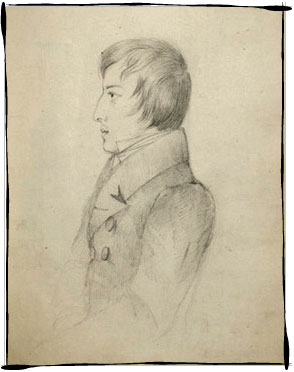



Genre of Impromptu
The impromptus are among Chopin's most enchanting works
(André Gide)
The impromptus offer us music without shade, a series of musical landscapes prefiguring impressionism
(Mieczysław Tomaszewski)
In the Chopin oeuvre, impromptus form a group of four independent works, written in the following order:
- Impromptu in C sharp minor (1833-34, published posthumously in 1855)
- Impromptu in A flat major, Op. 29 (composed and published 1837)
- Impromptu in F sharp major, Op. 36 (composed 1839, published 1840)
- Impromptu in G flat major, Op. 51 (composed 1842, published 1843)
Only three of them were opused and intended for print by Chopin. Interestingly, it is the C sharp minor Impromptu, rejected by Chopin as unsuitable for publication and only published after his death by Julian Fontana under the title Fantasy-impromptu, Op. 66, that has gained particular popularity among pianists and listeners.
Chopin's impromptus are quite expansive works: somewhat longer than the nocturnes, shorter than the ballades and scherzos. In Chopin's day, there also existed impromptus in the style of improvised variations, written on popular themes (e.g. from operas), as well as free-standing impromptus-works created "in promptu", that is,"‘immediately, in an improvised way". Of the great composers, Schubert wrote such autonomous impromptus.
Chopin drew on the tradition of the impromptu as an autonomous work. His four impromptus are generally marked by cheerful expression (major keys dominate), devoid of dramatic features. They are of similar construction: a tripartite reprise form (A B A and coda), with the outer sections dominated by a sustained, heightened motion with a meandering melody stretched across very broad arches, whilst the middle section usually features a lyrical song in much slower motion. So it is the "reverse pattern" to the convention of the nocturne, to which the Chopin impromptu is in some way akin.
These works captivate us with their airiness and poetical mood, their unparalleled subtlety and the "delicacy of the line" with which these "musical landscapes" are drawn. The essence of these unique compositions is not easy to grasp.
The three opused impromptus, in A flat major, F sharp major and G flat major, are distinguished by the purest genius and a masterly refinement. Despite similarities in their overall conception, each one is different. The Impromptu in A flat major, Op. 29 - a work "light as foam and bright in colour" (Zieliński) - has thoroughly étudal and lacily delicate figuration in its outer sections and a tuneful melody, of nocturne-like expression, in the middle section. The most mysterious piece is the archly refined Impromptu in F sharp major, Op. 36. Its form is more complex than that of the other three, its narrative somewhat capricious and surprising. It is a work that is strikingly distinctive. Firstly, it begins, not in lively motion, but contrarily with a quasi-nocturnal, slow-moving theme. Secondly, the middle section (in the key of D major) is marked by a wholly unexpected and gradually heightening heroic tone. Thirdly, the heroic episode breaks off quite suddenly, and by means of an extraordinary modulation-perhaps the "oddest" in the whole of Chopin-the composer returns to the main theme, subjected to variations.
The Impromptu in G flat major, Op. 51 is similar in form to the A flat major, but is calmer than that earlier piece. This is music of great distinction and reflection. The Fantasy-impromptu in C sharp minor, Op. 66, the earliest of all, wins over the listener with its very showy virtuosity, and its external pianistic lustre is equally as important as the calm, lyrical song in the middle section.
Author: Artur Bielecki
Impromptu A flat major Op. 29
Chopin composed the Impromptu in A flat major in 1837 and published it the following year, dedicating it to one of his pupils, Lady Caroline de Lobau. The enchanting arabesque of the opening theme is followed by its complement, which wanders hesitantly and endlessly over the keyboard (bars (8)9–16). The middle section of the Impromptu, in the relative key of F minor, is filled with a piano song – sweeping and embellished, after the fashion of an improvised aria or nocturne (bars 43–54). Returning in the reprise is the arabesque of a melody spun out seemingly without end, though finally extinguished, backed by chords that are cast forth softly, mezzo voce. It is difficult to call this anything other than the music of confidences.
If this music does indeed bring us confidences, they would appear to be tender, not darkened by shadows. As Ferdynand Hoesick sees it, the A flat major Impromptu ‘has the brightness of sunlight playing in a fountain’s spray’. In Arthur Hedley’s opinion, it has ‘all the air of a carefree improvisation’, though ‘closer inspection of the first section reveals a skilful hand at work.’
The appearance of new works by Chopin was greeted with reviews that sought to outstrip one another in their admiration. There were exceptions, however, generally dictated by particular circumstances. The Impromptu in A flat major was met with an amusing anonymous review in a periodical issued by a rival publisher – La France musicale. ‘The best thing one can say about this work is that Chopin composed very beautiful mazurkas […] at the end of the fifth page, Mr Chopin is still seeking an idea… he ends at the bottom of the 9th page, [having failed to find one] by slapping down a dozen chords. Voilà l’Impromptu’.
Author: Mieczysław Tomaszewski

